Are you tired of dealing with frizzy and damaged hair? Wrapping hair is often touted as a protective style that can help keep your locks healthy, smooth, and protected. But is it really effective?
In this article, we delve into the world of hair wrapping to determine if it lives up to its reputation as a protective style.
Is wrapping your hair good for your hair
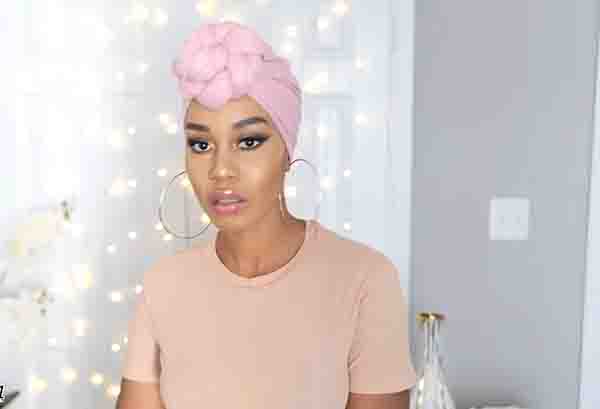
Hair wrapping involves covering your hair with a silk or satin scarf or bonnet before going to bed or during the day.
Proponents of this technique claim that it helps retain moisture, prevents breakage, and minimizes friction. But does it actually work?
We explore the science behind wrapping hair and whether it truly provides the protection it promises. We also delve into the best practices for hair wrapping, such as the type of fabric to use and how to tie it properly.
Whether you’re a fan of hair wrapping or skeptical about its benefits, this article aims to provide you with the information you need to make an informed decision about incorporating this technique into your hair care routine.
How long can you keep your hair wrapped
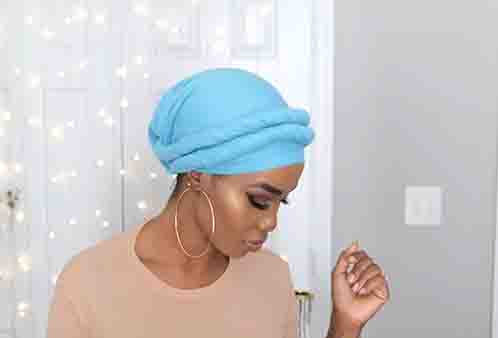
You can generally keep your hair wrapped for a few hours to overnight. It’s important not to keep it wrapped too tightly or for excessively long periods to avoid potential damage or discomfort.
When going outside with a protective hair wrap, you can typically keep your hair wrapped for the entire duration of your outing. This can range from a few hours to the entire day, depending on your comfort and the style you’re trying to maintain. Just ensure the wrap is secure and comfortable to avoid any discomfort or damage to your hair.
Head wraps fulfill the dual purpose of maintaining hair hydration and serving as a stylish accessory
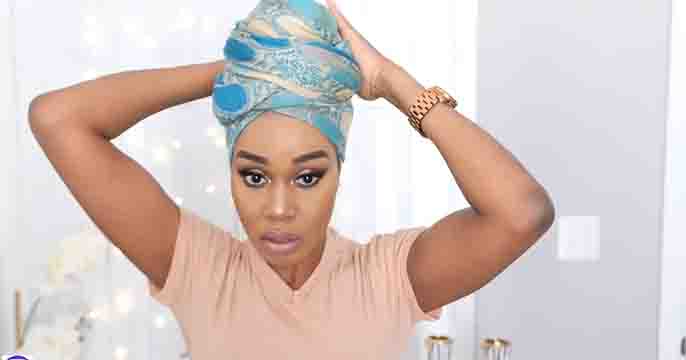
Head wraps have become increasingly popular as a versatile and stylish accessory. But beyond their fashion appeal, they also serve a practical purpose in maintaining hair hydration and protecting your locks.
1. Retaining Moisture and Preventing Breakage
By covering your hair with a silk or satin scarf or bonnet before going to bed or during the day, head wraps help retain moisture and prevent breakage.
2. Minimizing Friction and Damage
The smooth texture of silk or satin reduces friction, minimizing damage caused by rubbing against pillowcases or other fabrics.
3. Fashion and Style: Head Wraps as a Stylish Accessory
Not only do head wraps provide a protective barrier for your hair, but they also come in a wide variety of styles and designs, making them a fashionable accessory that can enhance any outfit.
a. Versatility in Design and Style
Beyond their practicality, head wraps offer a plethora of stylish options. With various styles and designs available, they can effortlessly enhance any outfit, adding a touch of elegance or vibrancy.
b. Self-Expression and Individuality
Head wraps come in a wide range of patterns and fabrics, catering to diverse tastes and preferences.
Whether you prefer vibrant African prints or sophisticated silk scarves, head wraps are a canvas for self-expression.
Moreover, head wraps are easily accessible and can be found in a range of colors, patterns, and fabrics, allowing you to find the perfect style that suits your personal taste.
4. Weather Protection: Shielding Hair from Harsh Conditions
Head wraps are particularly beneficial during the dry, humid heat of summer and the coolness of winter.
a. Summer Protection
The dry and humid heat of summer can be damaging to hair, making it prone to dryness and brittleness.
Head wraps act as a barrier against these external elements, safeguarding your hair’s moisture and strength.
I. Counteracting Sun-Related Hair Damage
When summertime arrives, head wraps remain a valuable asset in safeguarding your hair from the damaging effects of UV rays and heat. Sun exposure can result in hair dryness, fading of color, and heat-induced damage.
b. Winter Care
These weather conditions can wreak havoc on hair, causing it to become dry, brittle, and prone to breakage.
By wrapping your hair, you create a protective barrier that shields it from these harsh external factors.
c. The Unpredictable Nature of New York Weather
Living in a city like New York with its erratic weather patterns requires adaptable solutions. Head wraps have emerged as a dependable choice for safeguarding hair from the unpredictable effects of both cold and hot weather.
d. A Defense Against Extreme Elements
Regardless of the season, head wraps offer a crucial protective barrier against the harsh elements. Whether it’s the biting winter winds or the blazing summer sun, they serve as a shield for your hair.
e. Winter Protection: Combating Cold-Weather Hair Issues
I. Tackling Dryness, Brittleness, and Heat Damage
During the winter months, head wraps prove to be essential in averting various hair-related challenges.
The cold air can strip moisture from your hair, leading to dryness and increased vulnerability to breakage.
Head wraps act as a barrier, aiding in moisture retention and defense against the drying impact of cold weather.
II. Effective Moisture Retention
The barrier created by a head wrap helps maintain the natural moisture levels in your hair, preventing it from becoming excessively dry due to the frigid temperatures.
2. Dual Benefits: Protection and Comfort
Sporting a head wrap doesn’t just shield your hair from these detrimental effects; it also ensures your hair remains cool and comfortable amidst the sweltering sun. This dual benefit makes head wraps an all-season necessity.
5. Maintaining Natural Oils and Moisture Balance
Additionally, head wraps help to retain natural oils in your hair, preventing it from drying out and maintaining its moisture balance.
Versatility Beyond Protection: Styling and Convenience
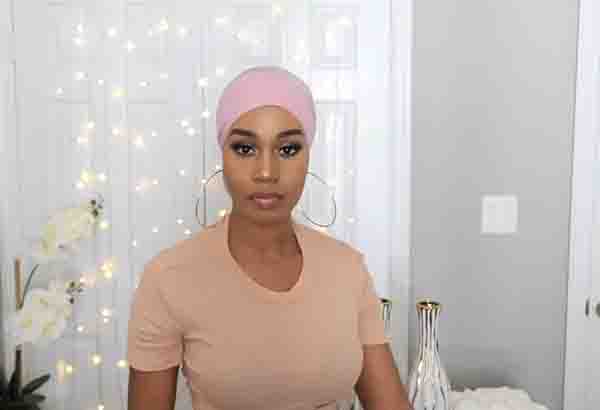
One of the advantages of using head wraps is their versatility. They not only provide protection for your hair but also offer a convenient solution for effortless styling.
1. A Multi-Purpose Solution
The utility of head wraps extends beyond hair protection, encompassing a convenient answer to effortless styling.
Regardless of the situation – whether you’re running short on time or experiencing a challenging hair day – head wraps step in as a savior. They empower you to effortlessly craft a stylish appearance without the requirement for intricate styling methods.
2. Effortless Styling on Demand
The beauty of head wraps lies in their ability to swiftly transform your look. Even if you lack the time for intricate hairstyling or find yourself facing a hair crisis, head wraps serve as a rapid solution for a chic appearance.
Perfect for Beginners: Stretch Head Wraps
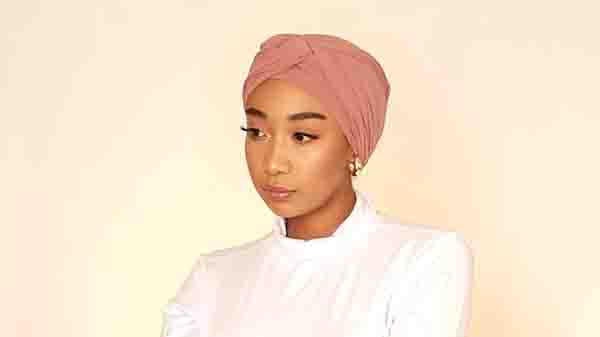
For beginners, stretch head wraps are a great option. These wraps are made from materials like cotton or stretchy fabrics, which provide both comfort and ease of use.
1. Comfort and Simplicity
For individuals new to using head wraps, stretch head wraps emerge as a smart choice. Constructed from materials such as cotton or stretchy fabrics, they prioritize both comfort and ease of use.
2. Snug Fit without Discomfort
The inherent stretchiness of these wraps ensures a secure fit that doesn’t compromise comfort. Simultaneously, the use of gentle cotton fabric minimizes friction, contributing to a hair-friendly experience.
3. Forgiving for Beginners
Beginners find working with stretch head wraps to be less overwhelming. The forgiving nature of these materials enables experimentation with diverse styles and techniques without causing undue stress.
African Head Wraps

1. Cotton Wax Wraps for Durability
African head wraps, particularly those crafted from cotton wax, possess distinctive qualities that enhance their durability and user-friendliness.
2. Enhanced Grip and Stability
The diverse textures of these head wraps reduce the likelihood of slipping or coming undone. This feature grants the freedom to wear them for extended periods without constant adjustments or re-wrapping, making them suitable for individuals with bustling lifestyles or those who prefer low-maintenance hairstyles.
Turbans and head wraps serve a dual purpose in addressing hair and scalp issues
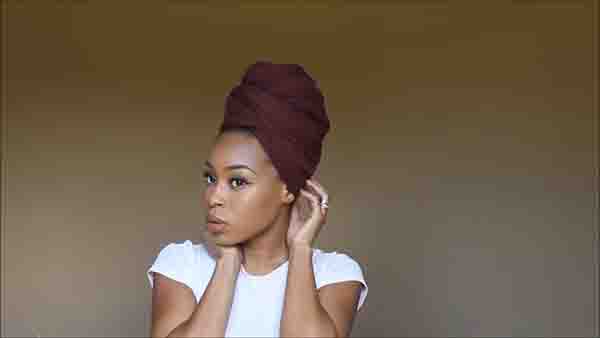
Turbans and head wraps not only serve as a stylish accessory but also address various hair and scalp issues.
Whether you’re dealing with hair loss, thinning hair, or scalp conditions, turbans, and head wraps can provide a practical solution.
These accessories not only conceal problem areas but also act as a safeguard against environmental factors like wind, rain, and heat.
The tight fit of turbans and head wraps creates a barrier that protects your hair and scalp from external elements. This can help prevent damage caused by excessive sun exposure, which can lead to hair dryness, brittleness, and heat damage.
By shielding your hair from these harmful factors, turbans and head wraps contribute to the overall protection and maintenance of hair growth and health.
Bohemian Turban Shawl Head Wrap
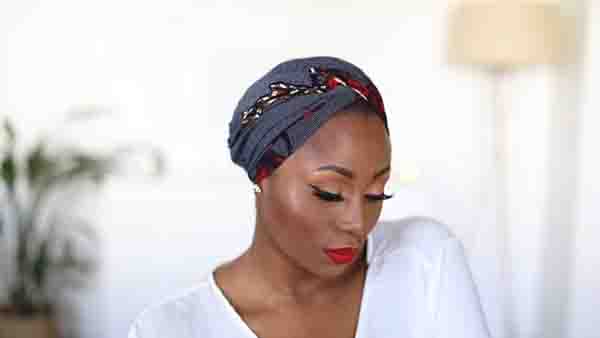
The Bohemian Turban Shawl Head Wrap stands out with its unique features and benefits. Made from a combination of soft and breathable materials, including cotton and spandex, this head wrap offers both comfort and style.
The material composition ensures a comfortable fit that is gentle on your hair and scalp, while the spandex provides stretch and flexibility for easy manipulation and styling.
The Bohemian Turban Shawl Head Wrap is designed with multiple openings, allowing for versatile styling options.
Whether you prefer a classic turban look, a chic twisted style, or a bold knot, this head wrap can be effortlessly transformed to suit your desired look.
The openings provide easy access for wrapping, twisting, and securing your hair, making it a quick and convenient choice for those busy mornings or last-minute outings.
Wrapping hair with a head wrap help in retaining moisture
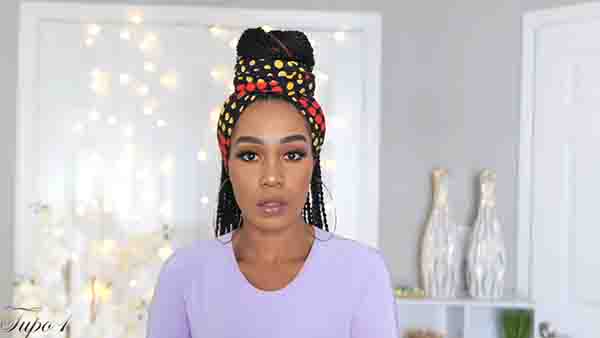
When you wrap your hair, you create a barrier that prevents moisture loss.
This is especially important for individuals with dry or damaged hair, as it helps to restore and maintain the hair’s natural moisture balance.
To maximize the moisture-retaining benefits of hair wrapping, it’s recommended to use a satin scarf underneath when using a cotton head wrap.
Satin is a smooth and slippery fabric that reduces friction and minimizes moisture evaporation from your hair.
By layering a satin scarf underneath the cotton head wrap, you create an extra layer of protection and ensure that your hair retains its moisture throughout the day or night.
The “Twisted Wrap” style: unique and different from other head wrap styles
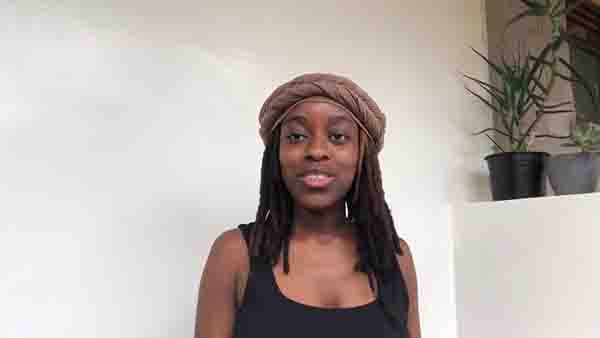
During my experimentation with head wraps, I stumbled upon a unique style that I like to call the “Twisted Wrap.”
This style combines twisting or braiding the hair and covering it with a head wrap. By incorporating these two techniques, the Twisted Wrap offers a secure and stylish way to protect your hair.
To create the Twisted Wrap style, start by twisting or braiding sections of your hair. Once your hair is twisted or braided, cover it with a head wrap, ensuring that the wrap is securely tied at the back of your head.
This style not only provides protection for your hair but also adds an interesting twist to the overall look.
The Twisted Wrap can be customized to suit your preferences by experimenting with different head wrap styles and hair textures.
My Nigerian best friend influenced my interest in head wraps
Growing up, my Nigerian best friend played a significant role in cultivating my interest in head wraps. I was always fascinated by the African printed fabrics she would wear for special occasions.
Although she didn’t often wear traditional head wraps herself, she introduced me to the beauty and versatility of African textiles.
These vibrant and bold prints inspired me to explore different head wrap styles and experiment with incorporating them into my daily wardrobe.
Why I love wrapping hair as a protective style
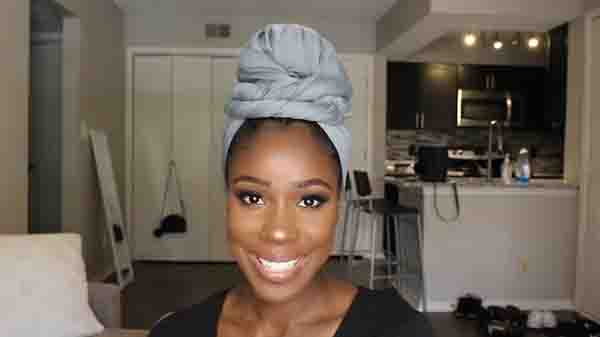
As a copywriter and digital marketer, my days are often filled with deadlines and client meetings.
The last thing I want to worry about is my hair. That’s where hair wrapping comes in. Wrapping my hair has become an essential part of my daily routine, providing me with both protection and convenience.
Hair wrapping allows me to maintain the health and integrity of my hair. By creating a protective barrier, it shields my hair from external elements and reduces damage caused by friction and manipulation.
This not only helps to minimize breakage but also promotes hair growth and overall hair health.
Additionally, hair wrapping saves me valuable time in the morning. Instead of spending hours styling my hair, I can simply wrap it and be ready to go.
This allows me to focus on my work and start my day with confidence, knowing that my hair is protected and looking stylish.
Ways to wear a head wrap
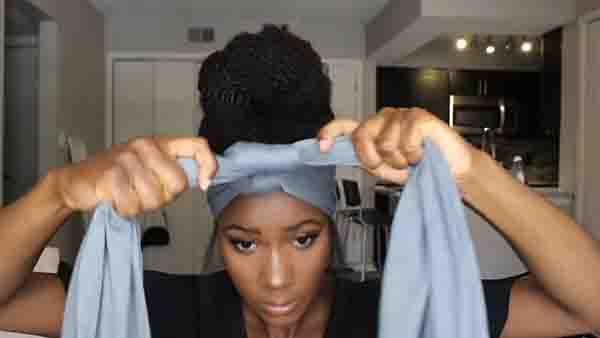
There are countless ways to wear a head wrap, each offering its own unique style and flair. Here are a few popular options:
1. Classic Turban
Start by folding the head wrap into a wide band. Place it at the nape of your neck and bring it up towards your forehead, crossing it over. Continue wrapping it around your head until you reach the desired tightness. Tuck in any loose ends and adjust as needed.
2. Twisted Style
Begin by twisting sections of your hair and securing them with bobby pins or hair ties. Then, place the head wrap at the back of your head and bring it towards your forehead. Twist the wrap as you go and continue wrapping it around your head, incorporating the twisted sections of hair. Secure the wrap at the back of your head and adjust as necessary.
3. Bold Knot
Fold the head wrap into a wide band and place it at the back of your head. Bring the ends of the wrap towards your forehead and tie them into a knot. Adjust the knot to your desired size and position.
These are just a few examples, and the possibilities are endless. Feel free to experiment with different styles, techniques, and accessories to create your own unique look.
FAQ
Head wraps can cause damage if tied too tightly or if worn frequently.
It’s recommended to keep a towel wrap for 10-15 minutes.
Showering with a hair wrap is not advisable as it can get wet and soggy.
Keeping hair wrapped all day can lead to trapped moisture and potential damage.
Wrapped hair can last as long as needed but shouldn’t be kept wrapped for extended periods.
Hair wrapping doesn’t directly influence hair growth.
Gentle hair wrapping can help prevent breakage by reducing friction.
Wet wrapping hair can be beneficial for deep conditioning, but it should be done sparingly.
Wrapping hair in a towel can cause damage if tied tightly or twisted too much.
Excessive or tight wrapping can potentially cause breakage.
Use a satin or silk scarf to gently wrap hair, securing it without tension.
A hair wrap made of gentle materials can be better than a rough towel for drying hair.
Various cultures, including African and Middle Eastern, have a tradition of wearing hair wraps.
Sleeping with hair down or in a loose style is generally less damaging.
Wear hair in a loose bun, braid, or use a satin pillowcase to prevent friction.
Verdict
In conclusion, wrapping hair can indeed be an effective protective style. By covering your hair with a silk or satin scarf or bonnet, you create a barrier that helps retain moisture, prevents breakage, and minimizes friction.
Head wraps offer a versatile solution for both hair protection and effortless styling, making them a practical and fashionable accessory.
Whether you’re dealing with hair and scalp issues or simply want to enhance your style, head wraps can be a valuable addition to your hair care routine.
So, embrace the world of hair wrapping and enjoy the benefits it has to offer.

